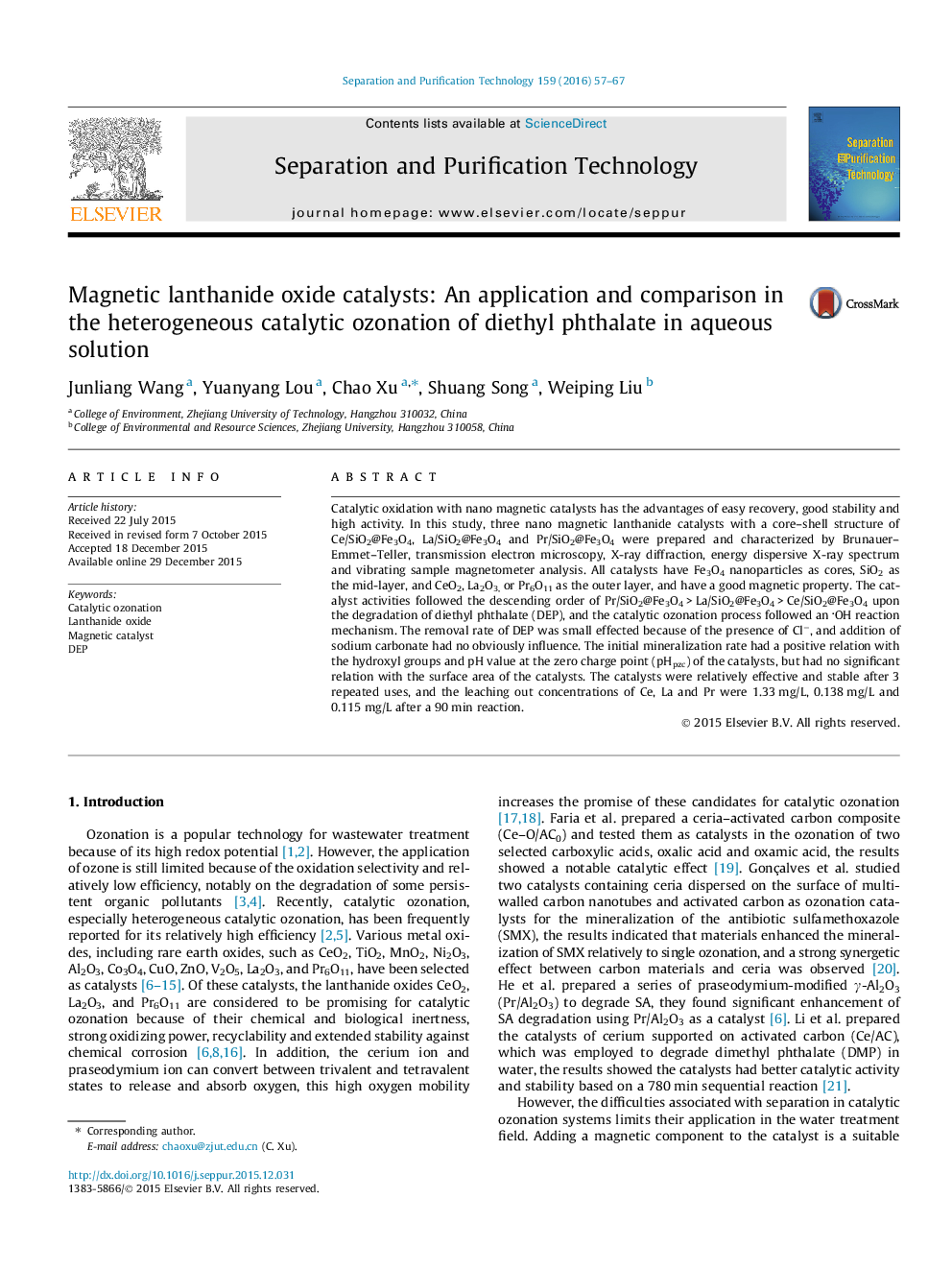| Article ID | Journal | Published Year | Pages | File Type |
|---|---|---|---|---|
| 640151 | Separation and Purification Technology | 2016 | 11 Pages |
•Three nano magnetic lanthanide catalysts with a core–shell structure were prepared and characterized.•The catalysts were relatively effective, stable and recyclable.•The catalytic ozonation process followed an OH reaction mechanism.
Catalytic oxidation with nano magnetic catalysts has the advantages of easy recovery, good stability and high activity. In this study, three nano magnetic lanthanide catalysts with a core–shell structure of Ce/SiO2@Fe3O4, La/SiO2@Fe3O4 and Pr/SiO2@Fe3O4 were prepared and characterized by Brunauer–Emmet–Teller, transmission electron microscopy, X-ray diffraction, energy dispersive X-ray spectrum and vibrating sample magnetometer analysis. All catalysts have Fe3O4 nanoparticles as cores, SiO2 as the mid-layer, and CeO2, La2O3, or Pr6O11 as the outer layer, and have a good magnetic property. The catalyst activities followed the descending order of Pr/SiO2@Fe3O4 > La/SiO2@Fe3O4 > Ce/SiO2@Fe3O4 upon the degradation of diethyl phthalate (DEP), and the catalytic ozonation process followed an OH reaction mechanism. The removal rate of DEP was small effected because of the presence of Cl−, and addition of sodium carbonate had no obviously influence. The initial mineralization rate had a positive relation with the hydroxyl groups and pH value at the zero charge point (pHpzc) of the catalysts, but had no significant relation with the surface area of the catalysts. The catalysts were relatively effective and stable after 3 repeated uses, and the leaching out concentrations of Ce, La and Pr were 1.33 mg/L, 0.138 mg/L and 0.115 mg/L after a 90 min reaction.
